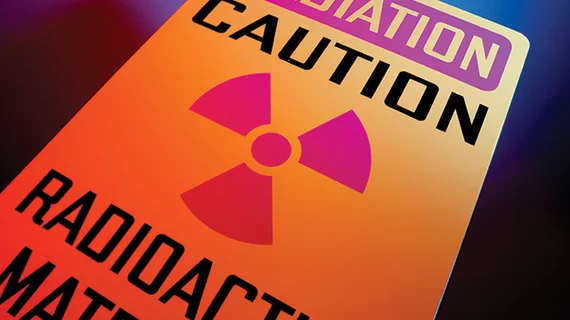Researchers ask: Which interventional radiology procedures involve highest radiation exposure?
Researchers set out to determine the dosimetry levels of commonly performed interventional radiology procedures and compared those doses to commonly accepted reference levels in a July 3 Journal of the American College of Radiology study.
“Establishing reference levels for interventional radiologic procedures, particularly those associated with increased radiation doses, may provide institutional quality benchmarks and inform patients of radiation risks associated with fluoroscopically guided procedures,” wrote corresponding author Jeffrey Chick, MD, with the University of Michigan Health System, and colleagues.
Authors collected and analyzed demographic and dosimetry data from 12 commonly performed interventional radiology procedures using dosimeter software. They measured for fluoroscopy time, dose area product (DAP) and reference dose. A total of 4,784 patient encounters were included.
The study analyzed gastrostomy, nephrostomy, peripherally inserted central catheter (PICC) placement, visceral arteriography, hepatic chemoembolization, tunneled catheter placement, inferior vena cava (IVC) filter placement, vascular embolization, transjugular liver biopsy, adrenal vein sampling, transjugular intrahepatic portosystemic shunt (TIPS) creation and biliary drainage.
Results showed TIPS had the highest mean fluoroscopy time (49.1 ± 16.0 min) followed by vascular embolization (25.2 ± 11.4 min), hepatic chemoembolization (18.8 ± 12.5 min) and visceral arteriography (17.7 ± 3.2 min).
Additional results included:
Highest mean DAP (from highest to lowest):
- TIPS (429.2 ± 244.8 grays per square centimeter [Gy·· cm2]).
- Hepatic chemoembolization (354.6 ± 78.6 Gy·· cm2)
- Visceral arteriography (309.5 ± 39.0 Gy·· cm2)
- Vascular embolization (298.5 ± 29 Gy·· cm2)
Highest mean reference dose:
- TIPS (2.002 ± 1.420 Gy)
- Hepatic chemoembolization (1.746 ± 0.435 Gy)
- Vascular embolization (1.615 ± 0.381 Gy)
- Visceral arteriography (1.558 ± 1.720 Gy)
Only six procedures were available to compare with the reference levels generated by the 2003 Radiation Dose in Interventional Radiology (RAD-IR) study. All were “well below” the proposed reference levels for mean fluoroscopy time, DAP and reference dose, authors concluded.
“Advances in image acquisition technology and radiation safety protocols have significantly reduced the radiation exposure for a variety of interventional radiology procedures,” Chick et al. wrote. “The reference levels for patient radiation doses in interventional radiology reflect accurate and attainable goals for radiation safety quality assurance.”

